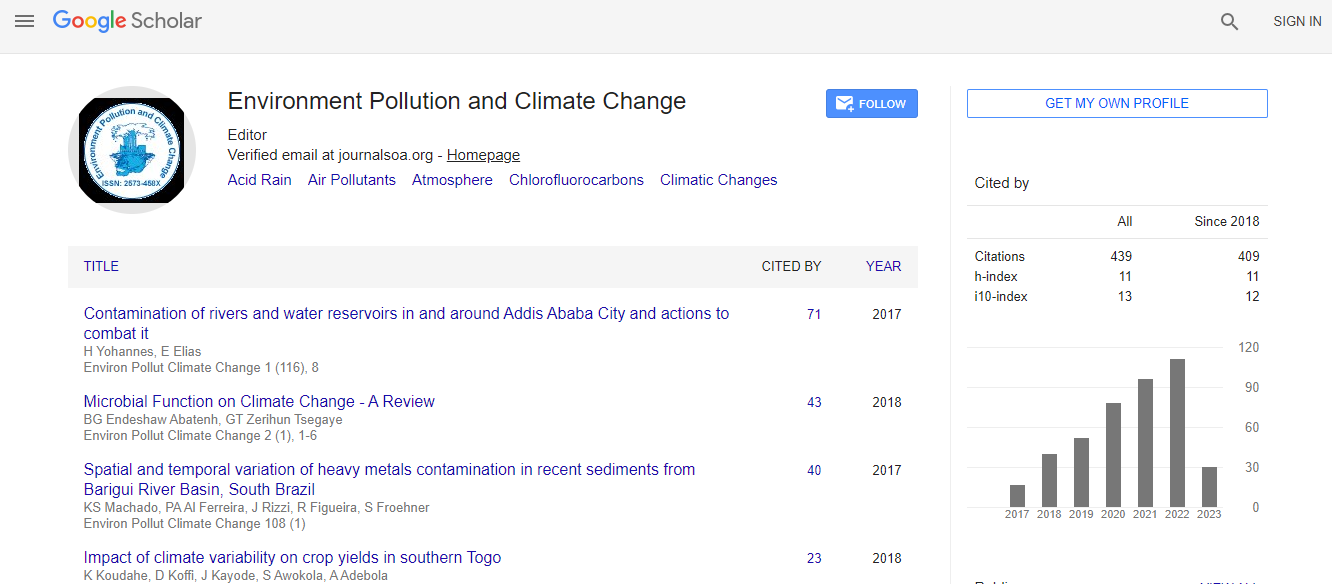Our Group organises 3000+ Global Conferenceseries Events every year across USA, Europe & Asia with support from 1000 more scientific Societies and Publishes 700+ Open Access Journals which contains over 50000 eminent personalities, reputed scientists as editorial board members.
Open Access Journals gaining more Readers and Citations
700 Journals and 15,000,000 Readers Each Journal is getting 25,000+ Readers
Google Scholar citation report
Citations : 672
Environment Pollution and Climate Change received 672 citations as per Google Scholar report
Environment Pollution and Climate Change peer review process verified at publons
Indexed In
- Google Scholar
- Publons
- Euro Pub
- ICMJE
Useful Links
Recommended Journals
Share This Page
Comparative analysis of Gordonia strains genomes capable of utilizing dibenzothiophene
Global Summit on Environmental Health
Frantsuzova E
FRC PSCBR RAS, Russia
ScientificTracks Abstracts: Environ Pollut Climate Change
Abstract
Sulfur makes up 0.05% to 10% of crude oil composition, with most of it bound as condensed thiophenes, which can make up to 75% of the total sulfur. When burning fossil fuels, a large amount of sulfur dioxide is emitted into the atmosphere, which is a serious source of air pollution, contributes to the appearance of acid rain, and also changes the natural balance of chemical elements in the environment, thereby affecting the biological diversity of ecosystems. The most convenient and eco-friendly method of desulfurization is biodesulfurization √ʬ?¬? the process of removing sulfur using microorganisms. As a rule, such microorganisms are used that are capable of utilizing sulfur through the 4S pathway (the metabolic pathway for extracting sulfur without changing the rest of the molecule), which facilitates the maintenance of the fuel calorific value. The aim of this work is the implementation of the comparative analysis of the genomes of dibenzothiophene-utilizing strains of Gordonia alkanivorans 135 (CP046257.1), Gordonia amicalis 1D (CP023405.1), and Gordonia amicalis 6-1 (CP096596.1). The genomes of the strains were sequenced and completely assembled. Structural annotation of genomes was performed using Prokka software, RAST, and NCBI Prokaryotic Genome Annotation Pipeline. Functional annotation of genomes was performed using the KEGG service. For a more detailed understanding of the structure of the genomes of DBTdegrading strains of the genus Gordonia, the degree of gene order between the genomes of the two species was determined using the MAUVE program. The results showed that the main blocks retain a similar arrangement on the chromosomes, and in general the structure of the genomes is similar. However, multiple small rearrangements are observed, which probably occurred as a result of the recombination process and the activity of a large number of transposases. The analysis of the obtained results showed that, despite the ability of the strains to utilize dibenzothiophene as a source of sulfur, the dsz operon genes are absent in the strains. However, in all the researched strains in the category of √?¬ęSulfur metabolism√?¬Ľ were found genes that are presumably related to the dszC genes.Biography
Frantsuzova Ekaterina Eduardovna is a postgraduate student and junior researcher in the G. K. Skryabin Institute of Biochemistry and Physiology of Microorganisms Russian Academy of Sciences (IBPM RAS) a separate subdivision of the Federal Research Center "Pushchino Scientific Center for Biological Research of Russian Academy of Sciences" (FRC PSCBR RAS). She received a bachelor’s degree in biology from Kuban State University and a master’s degree in microbiology and biotechnology from Pushchino State Institute of Natural Sciences. She is interested in genomic and transcriptomic analysis of bacteria.

 Spanish
Spanish  Chinese
Chinese  Russian
Russian  German
German  French
French  Japanese
Japanese  Portuguese
Portuguese  Hindi
Hindi 
